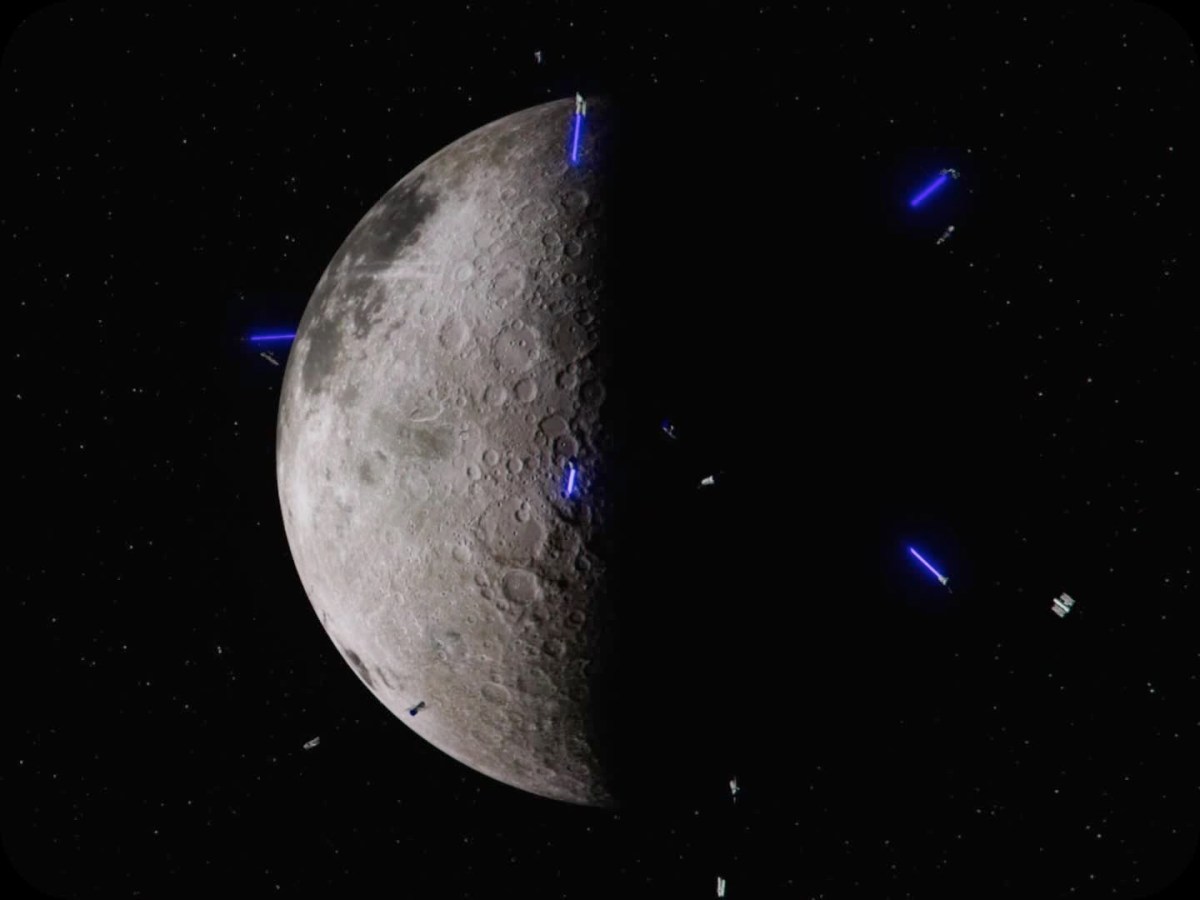WASHINGTON — A startup has unveiled plans to develop a network of satellites around the moon to provide power to spacecraft on the lunar surface.
Volta Space Technologies, headquartered in Montréal and with offices in the United States, revealed plans Oct. 10 for satellites that would collect power and transmit it via lasers to spacecraft on the lunar surface, helping them survive the two-week lunar night or operate in permanently shadowed craters at the lunar poles.
Justin Zipkin, co-founder and chief executive of Volta, said in an interview that the company emerged from a class project at the International Space University to power satellites as a service. That led to participating in a NASA prize competition called Watts on the Moon for developing lunar power technologies.
Volta’s system, called LightGrid, would involve satellites in lunar orbit, collecting solar power and beaming it down with lasers to receivers mounted on lunar landers and rovers. That would allow the landers and rovers to continue to operate when solar power is not available. Paolo Pino, co-founder and chief technology officer of Volta, said it could later be extended to other lunar facilities, from sensors to in-situ resource utilization plants.
“The customers we were speaking to all had a lot of excitement for the kind of service that we could provide, the capability of lunar night survival and being able to operate in permanently shadowed regions and to buy power on demand, no matter what location you’re at,” Zipkin said, noting the company has term sheets from potential customers valued at more than $250 million to provide power services if it can deploy the system.
The company has developed technology to transmit power by lasers, testing it in labs and in the field at distances of up to 850 meters. The company is gearing up to test the technology in Earth orbit on a satellite mission in 2026.
Pino said a minimum of three satellites in the “small satellite class” in low lunar orbits could provide full service to an individual customer, with the network scaled up to support more customers. “The advantage of being in orbit is that it’s more easily scaled and augmented with more satellites,” he said, as compared to placing power infrastructure on the lunar surface.
“It’s a much simpler proposition to put a spacecraft in low lunar orbit than it is to soft-land it on the surface,” added Paul Damphousse, chief operating officer of Volta and president of its U.S. subsidiary. “The chief advantage is that you’re in space, and you have global coverage from day one.”
Volta has raised a seed round of funding, the amount of which executives declined to disclose. The company’s investors include the funds MaC Venture Capital and Industrious Ventures, and it has won grants and awards from the Defense Department, NASA, the European Space Agency and the Canadian Space Agency.
Volta is working on a Series A round and Zipkin said it will need an additional Series B round to deploy that initial network of lunar satellites, projected for 2028.
The company is looking at other applications of both its satellite system and power-beaming technology. Damphousse noted that the satellites, operating in “very interesting orbits” around the moon, could accommodate hosted payloads.
“There are some space-to-space applications, particularly on the national security space side of things, where you are generating power and transmitting it to one or more platforms that are that are in space as well,” he said. Power could also be transmitted from space to users on the ground, with Volta exploring opportunities in airborne and maritime domains.
Zipkin added it could extend to emergency services, like disaster relief. “You can imagine being able to provide emergency services like power and communications when infrastructure is not working because of natural disasters,” he said.
Damphousse said the company sees synergies between the initial power delivery services it plans to provide at the moon and terrestrial applications. “There are some things that are unique to the moon that we don’t have to deal with on the Earth, and vice versa, but the level of overlap is much, much greater than not.”
